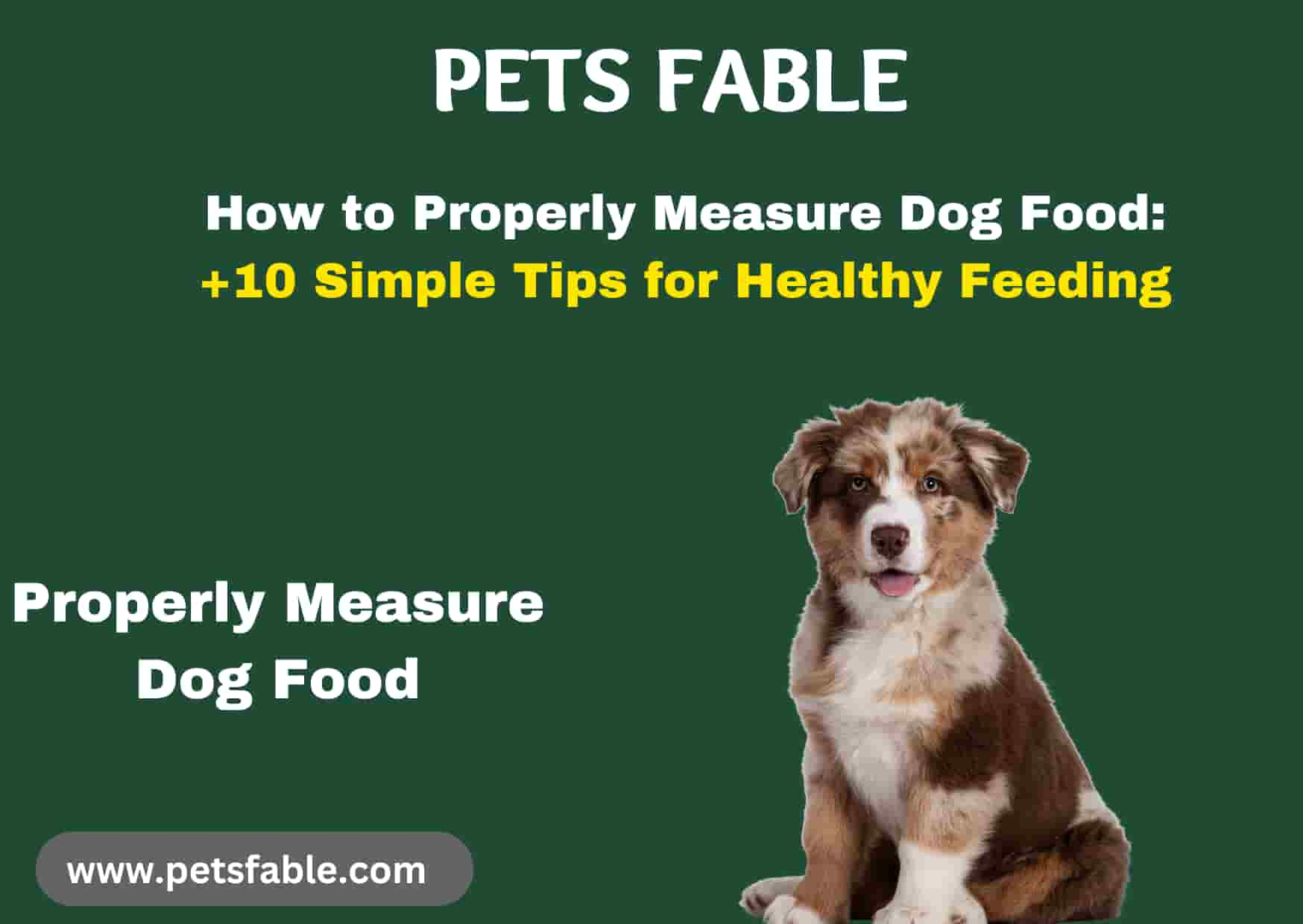Key Guidelines for Measuring Dog Food
Understanding the basics of pet care includes knowing how to measure your dog’s food accurately. Typically, a pound of dog food equals approximately 4 cups.
This straightforward conversion helps ensure that you provide the correct amount of food, balancing nutrition and enjoyment for your pet. Armed with this information, feeding your dog becomes an effortless and precise task, enhancing mealtime with both certainty and affection.
Essential Guide to Measuring Dog Food
Ever puzzled over how much to feed your furry companion from their dog food bag? Accurate measurement is not just about adhering to guidelines—it’s about promoting your dog’s health and well-being.
Fundamentals of Dog Food Measurement
Navigating dog food measurements can initially seem confusing. Packaging typically lists the weight in pounds and the recommended serving size in cups, sometimes including grams for those using the metric system. Familiarizing yourself with these units is key to managing your dog’s diet effectively.

From Pounds to Cups, Conversion Basics
It’s essential to recognize that dog food varies in density, which affects how much a pound will fill a cup. Generally, 1 pound of dog food is equivalent to about 4 cups. However, this can differ based on the specific product, so adjusting measurements according to the type of dog food is crucial.
Also read: Cold-comfort-are-huskies
Bag Sizes and Their Cup Contents
Knowing how many cups are in each common bag size can streamline your feeding routine. Here are typical conversions, though remember to consider the density of the food.
- 5lb bag: Roughly 20 cups
- 10lb bag: About 40 cups
- 20lb bag: Approximately 80 cups
Variety in Dog Food Bag Sizes
Dog food is available in several sizes to accommodate different breeds and multiple-pet households. The most frequent sizes you’ll find range from 5lb to 40lb bags, designed to meet the diverse needs of various dog owners.
By mastering these measurement fundamentals, you can ensure your dog is fed the right amount each meal, supporting their overall health and happiness.
Optimal Dog Feeding Guide, Balancing Quantity and Frequency
Determining the Correct Portion Size
The ideal amount of food for your dog depends on factors such as their size, age, and activity levels. Though feeding guidelines on the back of the food bag can serve as a useful reference, remember that every dog is different. Achieving the right balance is crucial for maintaining their health.
Daily Feeding Guidelines
Here’s a basic guideline to get you started: small dogs (up to 10 pounds) may need about 1 cup per day, medium dogs (up to 50 pounds) typically require 2-3 cups, and large dogs (over 50 pounds) usually need 3-4 cups or more. These amounts are just starting points, and you should adjust as necessary based on your dog’s specific needs.
Precision in Measuring Dog Food
To ensure accuracy in feeding, use measuring cups or scales. Maintaining consistency in how much you feed helps prevent both overfeeding and underfeeding, supporting your dog’s overall diet and health.

Adjusting Meal Sizes
Tailoring your dog’s food intake is both an art and a science, influenced by changes in their health, weight, and activity. Regular consultations with your veterinarian are essential to customize the diet effectively.
Managing Mixed Diets of Dry and Wet Food
Calculating Portions in Mixed Diets
When combining dry and wet dog food, consider the caloric density of wet food, which often requires reducing the quantity of dry food to keep the diet balanced.
Also read: The-mystery-of-blue-eyed-calicos
Advantages of a Mixed Diet
Mixing dry and wet food can provide numerous benefits. This strategy not only offers the ease of dry food but also the added moisture of wet food, enhancing both the taste and hydration for your dog, leading to improved health and satisfaction.
FAQ’s:
How do measurements change for wet food?
For wet dog food, measurements are typically in ounces or grams instead of cups, which ensures accurate delivery of moisture and nutrients.
How do you measure dog food if you combine dry and wet food?
When mixing dry and wet dog food, use cups for dry and ounces or grams for wet food, adjusting the proportions to maintain nutritional balance.
What is the best way to measure dog food?
The most accurate methods are using a kitchen scale for precision or a standardized measuring cup for ease, ensuring your dog receives the proper amount of food.
How do I know if my dog is getting enough food?
Monitor your dog’s energy, weight, and coat health. Signs of adequate nutrition include good energy levels, stable weight, and a healthy coat.
How many cups of food should an 85-pound dog eat?
An 85-pound dog generally requires about 4 to 5 cups of dog food daily, split into two meals to support their energy and nutritional needs.
How many cups of dog food per day?
The amount varies: small dogs may need about 1 cup, medium dogs 2 to 3 cups, and large dogs 3 to 4 cups or more per day, divided into two meals for better health management.
How much is 1 cup of dog food in grams?
One cup of dog food typically equals about 100 to 150 grams, depending on the food’s density and kibble size.
How many cups of dog food should I feed my dog?
The amount varies by size and activity level: up to 1 cup for small dogs, 2-3 cups for medium dogs, and 3-4 cups for large dogs, ideally split into two daily meals.
Conclusion
In essence, a pound of dog food is roughly equivalent to 4 cups, providing a simple guideline for proper feeding. This standard helps ensure that your dog is well-nourished and content.
